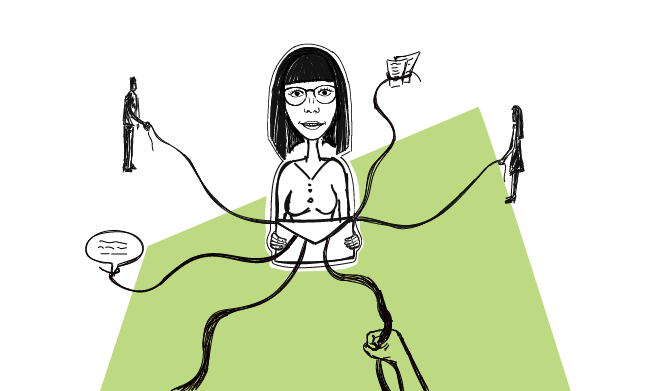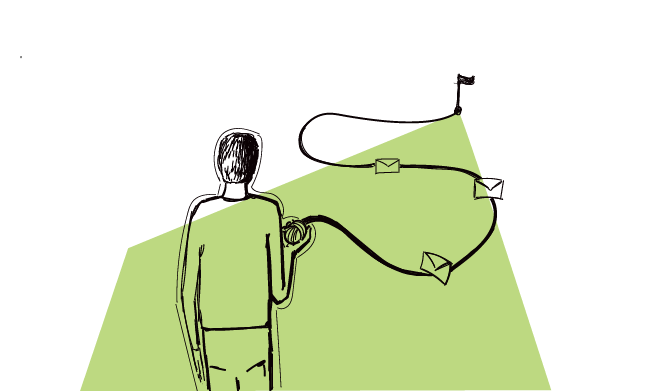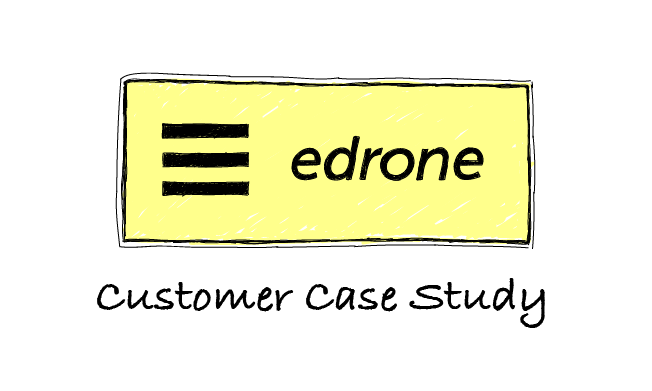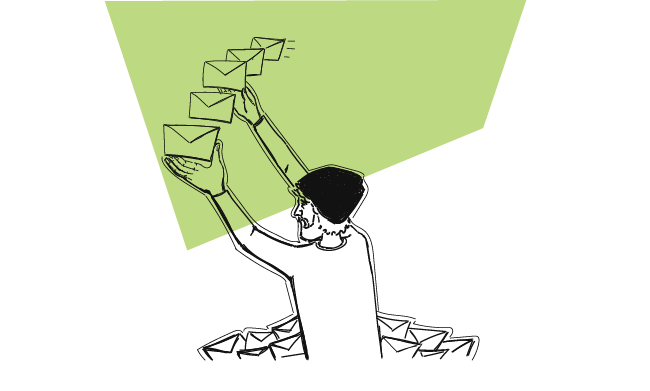If you’re in a SaaS business as we are, you know that you need the right strategy to deal with churn. Etienne Garbugli from Highlights, new software that uses a subscription model, wrote a guest post for the Woodpecker blog. All about using email for customer retention.
Without further ado, here it goes.
Why would you care about SaaS customer retention?
You spend hours finding and researching leads, you craft the perfect email, land a few demos, and after 2 or 3 calls, you manage to close the deal. The struggle’s over, right?
Not quite.
You went through all these efforts, now the last thing you want is for that customer to leave when they start using your product.
To succeed, you need a great product, but you also need to carefully craft and communicate the value of your product.
“Value delivery drives sustainable growth.” – Sean Ellis, GrowthHackers.com
Ok, but how?
What kind of product do you have?
The first thing you need to understand is the kind of product you’ve built. This will help set realistic expectations for retention.
Is your product used…
- Every day?
- Once a week?
- Once a month?
- Every now and then (episodic)?
Episodic products like SurveyMonkey or LANDR Audio where I used to work are not “natural” fits for subscription businesses. Inconsistent usage patterns often make these businesses better candidates for on-demand or transactional revenue models.
It doesn’t mean subscription can’t work, it just means it’s going to be more difficult.
Understanding the usage cycle of your product helps set realistic expectations for product engagement, which helps you understand what kind of email program you should be running.
For SaaS products customer retention is key
In SaaS, customer retention is the equivalent of repeat purchases in a store or on an e-commerce Website. For SaaS businesses, however, subscription cancellations (or churn) negate growth.
Maybe your sales team is able to get $10,000 of sales per month (new bookings), but if your monthly revenue churn (the dollar amount of your canceled or churned customers) is also $10,000, your business is not growing.
For example, if you started the year with 100 customers and lost 5% of your customers each month (5% monthly churn), your business lost 46 customers during the year (annual churn rate of 46%).
This means that to grow by just one customer, you need to sign at least 47 new customers during the year.
Best-in-class annual churn rates hover around 5 to 7%; that’s about 1 customer out of 200 per month… You can read more about the dynamics of churn in this great article by investor David Skok.
We’ll cover the product-side of retention on the Highlights blog, but for now, let’s talk about the role of emails in customer retention.
The 3 Roles of Emails in SaaS Customer Retention
Emails can be used in 3 ways to improve customer retention:
- To communicate the value of your product.
- To expand the perception of the value of your product.
- To remind customers of the value they’re receiving.
We’ll cover these 3 roles below. Here it goes:
1. Using emails to communicate the value of your product
Customer onboarding is the element of your product that has the greatest impact on retention. Here’s why:
- Great onboarding helps distill the value of your product.
- It helps break down and simplify the concepts used.
- It guides the customer to the elements of greatest value.
- It helps connect the product features to the customer’s desired outcomes (e.g. more money, more freedom, etc).
To successfully onboard customers, you have to understand what normal product usage looks like.
If your customers only use your product once or twice a year, it doesn’t necessarily mean that they’re not “retained”.
For example, I file taxes once a year, but because the “usage cycle” of accounting for me is once per year, I’m retained. If my accountant started sending bi-weekly emails asking me to complete X or Y, the emails would probably annoy me more than anything else.
Your onboarding and retention communications need to align with your product’s usage cycle. You have to define good and bad retention. To do that, you need to understand:
- Your best customers – The most engaged customers (1%).
- The next best – Customers ranked within the first 2 to 10%.
- Your worst customers – the least engaged customers (10%).
Your goal is to understand what made your most successful customers successful in order to reproduce it. This will help you create a benchmark for “normal” product engagement.
You can use analytics tools like Mixpanel, Kissmetrics or Google Analytics to track engagement cohorts looking for the best predictors of customer retention.
You can also use Amplitude, an analytics tool that automated part of that process. Their feature, Compass, scans through all of your user data, calculates the correlation coefficients between different product actions and reveals which behaviors lead to retention.
By looking at your product’s engagement cohorts, you’ll be able to find the retention drivers. You’ll want to identify the features with the most impact on retention. For example, for cold email automation tool Woodpecker, the retention drivers might be:
- Ease of integration
- Automatic follow-ups
- Human-like sending
- Stats
- Teamwork
You’ll want to write emails for the top five retention drivers.
Because customers might tune out your emails or unsubscribe, you’ll want to start with the most compelling retention drivers to get customers to the ‘Aha moment’ – the moment of realization of value – as quickly as possible.
The goal for each email is to explain the value of your product and drive the customer back in the product.
2. Using emails to expand the perception of the value of your product
Once customers have received all your onboarding messages, you’ll want to re-assess your communication style and rhythm.
At this point, you’ll have 3 groups of customers:
- Engaged customers that have completed the steps in your onboarding process.
- Engaged customers that haven’t completed the steps in your onboarding.
- Disengaged customers.
You’ll want to treat these customer groups differently:
For disengaged customers, you’ll want to send new messages introducing the same retention drivers from different angles. Since these customers are at risk of churning, you’ll want to create more proximity, inviting them to webinars or one-on-one calls.
For engaged customers with incomplete onboarding, you’ll want to focus on getting them to complete the actions tied to the missing retention drivers.
For engaged customers with completed onboarding, you’ll want to slow down communications and introduce new retention drivers (#6, #7, #8 on your list).
Sidebar: How to Keep Your Communications Interesting
Email is just one way to connect with your customers.
There’s a lot of channels you can use to communicate and reinforce the value of your product: loading screens, chat, coachmarks, popups, walkthroughs, notifications, SMS, In-app messages, etc.
Switching up the channels helps keep the messaging fresh and interesting. Each channel has its pros and cons; the ideal retention program has the product, In-app messages, and emails all working together. A tool like Intercom will let you do that.
3. Using emails to remind customers of the value they’re receiving
Once your customers have been onboarded, and you’ve expanded their perception of value, it’s happy ever after, right?
Unfortunately not.
Priorities change, the product uses evolve, team composition change and decision-makers move on. If that’s not enough, the longer your product is in the hands of businesses or consumers, the less it feels fresh and exciting. Maybe they’d like to try a new product at some point?
The perception of value tends to decrease over time. To improve retention, you have to constantly remind your customers of the value that your product provides.
You can do that in 2 ways:
- By introducing relevant new features or new value.
- By expanding the definition of value through communications.
The simpler the product, the harder this gets.
At LANDR Audio, because the product was a simple audio mastering tool with few features, we had to focus on the benefits around the product (the community, the advice, the support, etc).
We created LANDR Select, the premium (subscriber) newsletter, to expand the perceived value of the subscription. The newsletter featured premium content only available to subscribers and was in the format of a product unboxing.
Benefits come in all shapes and sizes. You can expand value by giving away additional services, special offers, promotion or collaboration opportunities, exclusive content or information, access to private communities, invitations to select events, etc.
If you map the lifecycle of your customer’s subscription, you can find ways to increase the perception of value.
The Challenges of Improving Retention
Customer retention is notoriously hard to experiment with. The evaluation cycle for any test your run will take at least a month (monthly subscriptions) but could take much longer when you need statistical significance.
More so, it’s difficult to attribute the impact of specific actions on retention. Did your onboarding email improve retention or was the customer success team’s implementation of subscription management software responsible?
These challenges will make it difficult to evaluate the impact of your efforts, but if your communications perform on their own (opens, clicks, positive responses, actions taken towards the product), they should have a positive effect on customer retention.
Monitor individual and overall performance, and quickly kill non-performers. Bad communications can create dissatisfaction with your service if you’re not careful.
How to Track SaaS Customer Retention
Depending on the average length of your customer lifetime and the usage cycle, you might want to track the 7, 30, 90 and 180-day retention rates to evaluate if your retention program is making progress.
It will be difficult to separate the impact of a product, support, and emails on retention, so you’ll want to focus on the customers that open and interact with your communications.
For example, of all the new customers that opened your first onboarding email, how many completed all the onboarding steps within 7 days? 14 days? 30 days?
You’ll want to track performance as a funnel, making adjustments week-over-week. You can experiment and track performance using a tool like Highlights, and as you optimize, you’ll start seeing positive results on your retention rate.
If you need real-life examples of customer retention emails, LiveAgent compiled a list of 15 customer retention email templates on their blog.
An optimized email retention program will help reduce churn and ensure that all your customers understand the true value of your product. It’s a must!
READ ALSO

What Can You Use Cold Emails for in a SaaS Company, besides Outbound Lead Generation?
What’s the first thing that comes to our mind when we think of cold emails in a start-up? Prospecting. Lead generation. Finding new customers potentially interested in our product or service. Fair enough. That’s probably the core application of B2B cold emails right now. But we can do more than that. So, what else can you use cold emails for in your SaaS company?

How to Scale New Client Onboarding Process in Your SaaS without Losing a Personal Touch?
Your sales team puts a lot of effort into finding the right prospects and starting a relationship with them, warming them up from cold to sales-ready. But conversion is not the end of a customer journey. It’s actually just the beginning. And if you want to maintain the relationship your sales team has started, it’s very important to take care of your customers’ experience from the very beginning.

Customer Case Study: How edrone.me Builds Relations with Future Customers Using Cold Email
It's a dream for a SaaS team when they hear that a customer of theirs is satisfied with the service and wants to share their experience as a case study. That's what happened to us when Michal Blak, the Co-founder and CEO of edrone.me told us that he's open to tell the story of his team's experiences with Woodpecker. Michal Konieczny, who takes care of business development at edrone, added his two cents and here we are. Check how the e-commerce CRM uses Woodpecker to start conversations with their ideal customers.

